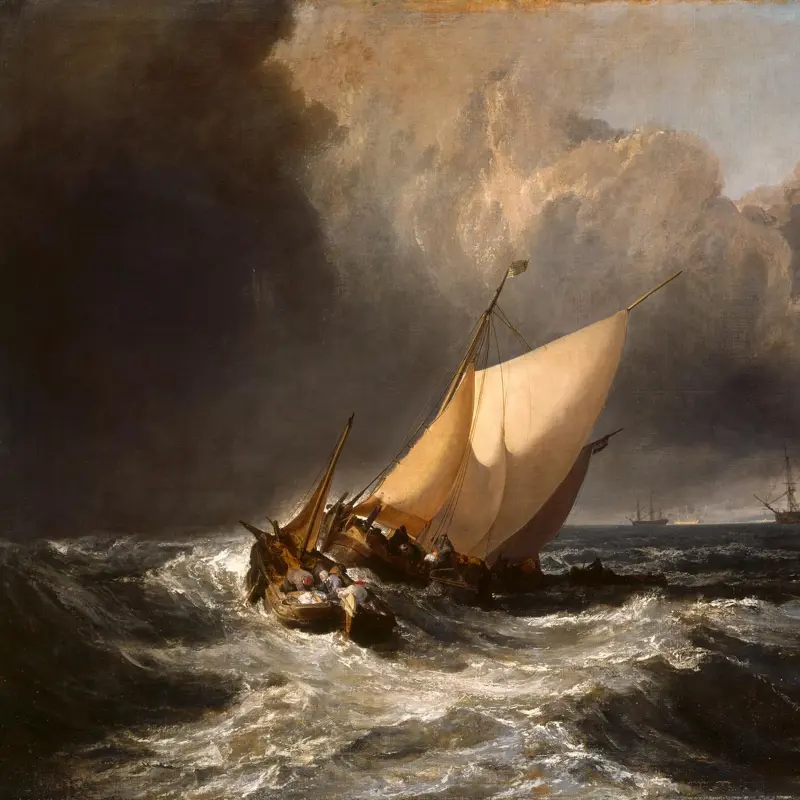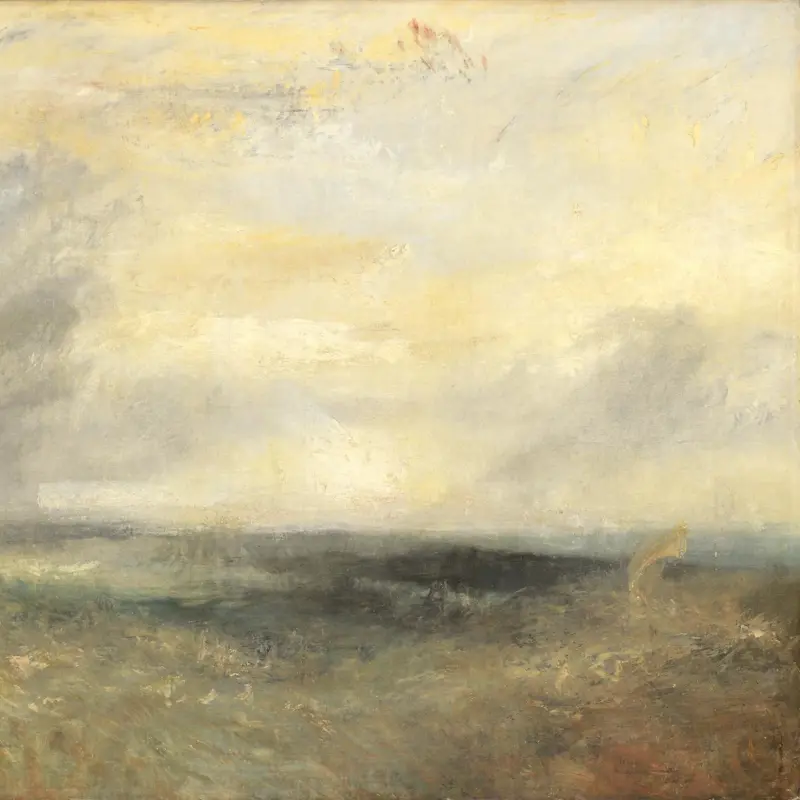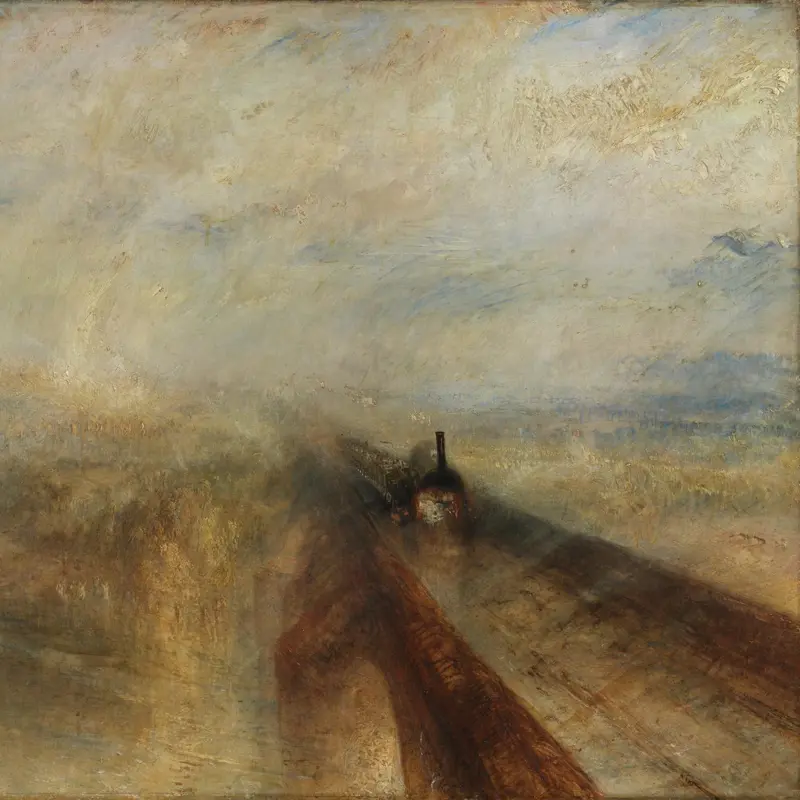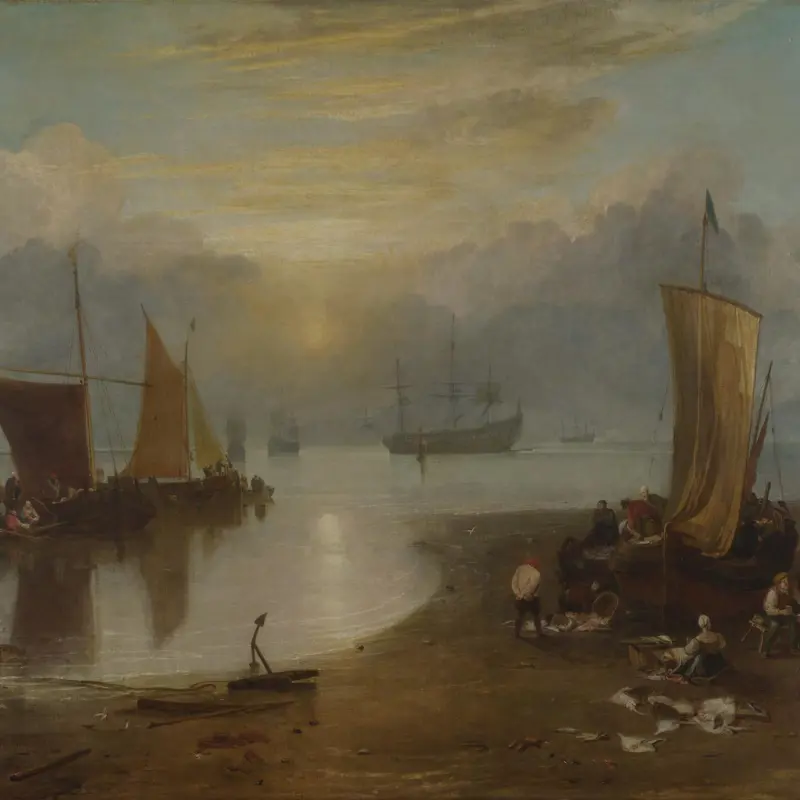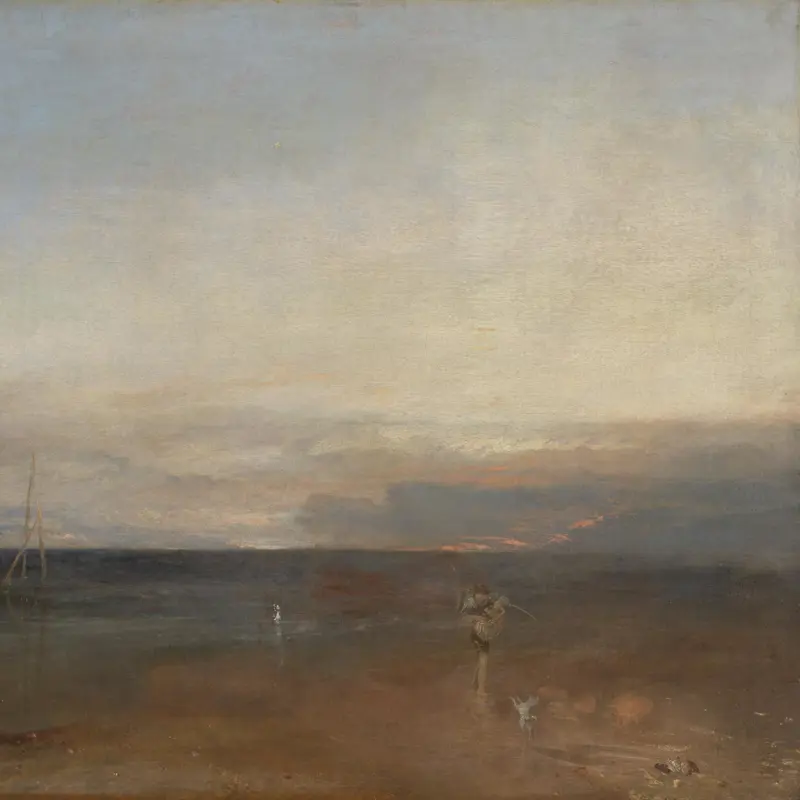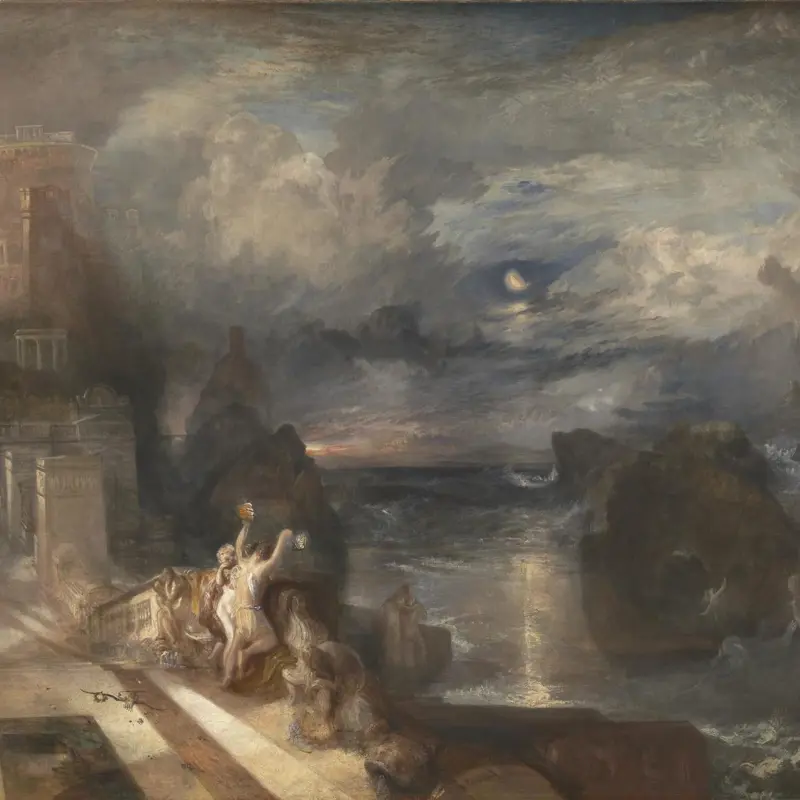Joseph Mallord William Turner, 'Calais Pier', 1803
About the work
Overview
A cross-channel ferry (a packet), fully laden with passengers and flying a British flag, is approaching the port of Calais. Around it, small French fishing boats (‘poissards’) head out to sea. The water is rough and dark storm clouds gather, although a shaft of sunlight breaks through to illuminate the white sail in the centre of the picture. In the lower right foreground, a small fishing boat is trying to get away to avoid being battered against the pier. The scene looks chaotic and there is a risk of collision.
Turner’s painting is based on an actual event he experienced, when he travelled from Dover to Calais in 1802 on his first trip abroad and was ‘nearly swampt‘ in a storm at sea. Although it had a mixed response when first exhibited at the Royal Academy in 1803, the critic John Ruskin declared it to be the first painting to show signs of ‘Turner’s colossal power’.
Key facts
Details
- Full title
- Calais Pier, with French Poissards preparing for Sea: an English Packet arriving
- Artist dates
- 1775 - 1851
- Date made
- 1803
- Medium and support
- oil on canvas
- Dimensions
- 172 × 240 cm
- Acquisition credit
- Turner Bequest, 1856
- Inventory number
- NG472
- Location
- Room 34
- Collection
- Main Collection
- Previous owners
- Frame
- 19th-century English Frame (original frame)
Provenance
Additional information
Text extracted from the ‘Provenance’ section of the catalogue entry in Judy Egerton, ‘National Gallery Catalogues: The British Paintings’, London 2000; for further information, see the full catalogue entry.
Exhibition history
-
2013Turner and the SeaNational Maritime Museum21 November 2013 - 21 April 2014
-
2022JWM Turner, curated by Larry AchiampongTurner Contemporary11 March 2022 - 19 June 2022
Bibliography
-
1851J. Ruskin, Pre-Raphaelitism, London 1851
-
1857J. Ruskin, Notes on the Turner Gallery at Marlborough House, 1856, London 1857
-
1857R.N. Wornum, Descriptive and Historical Catalogue of the Pictures in the National Gallery, with Biographical Notices of the Painters: British School, London 1857
-
1903J. Ruskin, Modern Painters, eds E.T. Cook and A. Wedderburn, The Works of John Ruskin, 39 vols, London 1903
-
1908W.G. Rawlinson, The Engraved Works of J.M.W. Turner, 2 vols, London 1908
-
1928W.T. Whitley, Artists and their Friends in England 1700-1799, London 1928
-
1939A.J. Finberg, The Life of J.M.W. Turner, R.A., Oxford 1939
-
1946Davies, Martin, National Gallery Catalogues: British School, London 1946
-
1946M. Davies, Paintings and Drawings on the Backs of National Gallery Pictures, London 1946
-
1959Davies, Martin, National Gallery Catalogues: British School, 2nd edn (revised), London 1959
-
1966L. Gowing, Turner: Imagination and Reality, New York 1966
-
1969J. Gage, Colour in Turner: Poetry and Truth, London 1969
-
1969D. Hirsch, The World of Turner, New York 1969
-
1973F.A. Whiting, 'Art and Acrimony', Apollo, XCVIII, 1973, pp. 43-6
-
1974M. Butlin, A. Wilton and J. Gage, Turner, 1775-1851 (exh. cat. Tate Galler and Royal Academy of Arts of Art, 16 November 1974 - 2 March 1975), London 1974
-
1978A. Macintyre and K. Garlick (eds), The Diary of Joseph Farington, vol. 5, New Haven 1978-1984
-
1981W. Gaunt, Turner, Oxford 1981
-
1981A.G.H. Bachrach, 'Turner, Ruisdael and the Dutch', Turner Studies, I/1, 1981, pp. 19-30
-
1982M. Butlin and E. Joll, L'opera completa di Turner 1793-1829, Milan 1982
-
1982A. Wilton, Turner Abroad:france, Italy, Germany, Switzerland, London 1982
-
1984M. Butlin and E. Joll, The Paintings of J.M.W. Turner, R.A., New Haven 1984
-
1987J. Gage, J.M.W. Turner: 'A Wonderful Range of Mind', New Haven 1987
-
1987A. Wilton, Turner in his Time, London 1987
-
1990E. Shanes, Turner's Human Landscape, London 1990
-
1990E. Shanes, Turner: The Masterworks, London 1990
-
1994F.G.H. Bachrach, Turner's Holland (exh. cat. Tate Gallery, 22 July - 2 October 1994), London 1994
-
1997A. Bailey, Standing in the Sun: A Life of J.M.W. Turner, London 1997
-
1997J. Hamilton, Turner: A Life, London 1997
-
1998J. Egerton, The British School, London 1998
-
2000Egerton, Judy, National Gallery Catalogues: The British Paintings, revised edn, London 2000
-
2001
C. Baker and T. Henry, The National Gallery: Complete Illustrated Catalogue, London 2001
Frame
Known as a Morland frame, this style of nineteenth-century English frame is named after the artist George Morland (1763–1804). Constructed from pinewood with a hollow profile, it is adorned along the top with reeding, bundled by ribbons that cross at the centre and cover the mitred corners. A decorative shell ornament is set in the hollow. The back edge is decorated with a lamb’s-tongue motif, while the sight edge features a water-leaf design, so-named for the wave-like movement at the edges of the leaves.
The frame’s decoration, made from composition, has since been regilded, probably more than once. This particular frame was made for Turner’s Calais Pier and was most likely his choice, as he also used a Morland frame for Dolbadarn Castle, his Diploma Work, gifted to the Royal Academy following his election as an Academician in 1802.
George Morland had a trusted framemaker, Thomas Merle (about 1753–1819), a skilled carver and gilder credited with the creation of the Morland frame. Due to its popularity, the frame design was reproduced in various workshops and used by numerous artists. Turner’s own framer was Robert Archer, who operated a workshop on High Street in Oxford.
About this record
If you know more about this work or have spotted an error, please contact us. Please note that exhibition histories are listed from 2009 onwards. Bibliographies may not be complete; more comprehensive information is available in the National Gallery Library.


